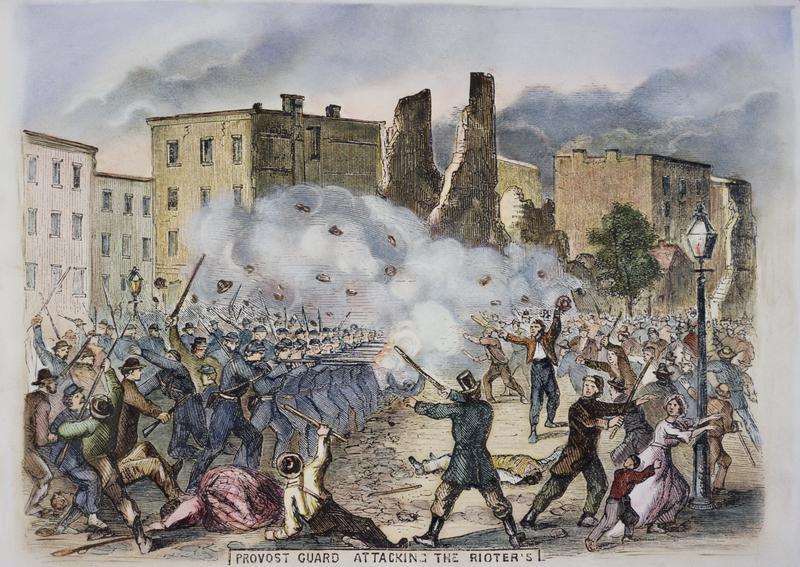The New York City Draft Riots
By | August 17, 2019

Ten days after the Union’s famous victory at the Battle of Gettysburg, New York City erupted in one of the most violent and racially-charged civil disturbances in American history.

New York City was never a whole-hearted supporter of the Union cause during the American Civil War. The South with its vast cotton production was a major trading partner of the city with one estimate showing that 40 percent of all goods shipped from New York before the Civil War were cotton. Also, the city was a “copperhead” stronghold, Northern democrats who were sympathetic to the South. To give you the idea, a former and notoriously corrupt mayor of the city, Fernando Wood, declared the “dissolution of the Union as inevitable” and that the “our aggrieved southern brethren of the slave states” were being subjected to the “fanatical spirit of New England.” He advocated that New York City should secede from the Union to become a “free city.”

In addition to this, many in New York were not sympathetic toward abolitionist causes. This was particularly true of Irish immigrants who viewed free African Americans as direct competition for their jobs. When Abraham Lincoln issued the Emancipation Proclamation on January 1, 1863, it stoked fear among immigrants that there would soon be an influx of liberated African Americans into the city to take their jobs. This resulted in protests by some groups that they were fighting to preserve the Union, not abolish slavery.

Meanwhile, the Union needed more and more troops to fight the war. On March 3, 1863, Abraham Lincoln signed the Enrollment Act which became commonly known as the Conscription Act or the Military Draft Act. This required that all male citizens between the ages of 20 and 45 be enrolled for potential conscription into military service to be selected by a draft.

There were only two means of being exempted from the draft. The first was the hire a substitute to fight for you. This was problematic since the military considered substitutes to be of inferior quality and also substitutes habitually deserted only to substitute again later.
In order to keep down potentially skyrocketing costs for substitutes, the government offered the second means of exemption, commutation. For $300 one could pay the government and be granted an exemption. This was thought to be desirable since it was better to get the $300 than a truly unwilling soldier. While $300 may not seem like much now, in 1862 a Brigadier-General made $329.50 a month and a private $13.00 a month. A day laborer in New York made on average less than a dollar a day. The law clearly favored the wealthy and it stuck in the craw of the working classes.

It was in this combustible atmosphere that the first draft took place on Saturday, July 11, 1863. All was quiet at first, but on Monday, July 13 a second drawing took place and riots broke out in the early morning.
A mob of about 500 white men, many volunteer firefighters started to set fire to governmental buildings. By the afternoon, the riot had picked up steam and the mob numbered in the thousands. At 4:00 pm out of resentment toward African Americans and perceived altruistic efforts of the upper classes to elevate them, they attacked the Colored Orphan Asylum which housed over 230 black children. These were evacuated before the building was destroyed.

Bringing the mob under control was impossible. The New York State Militia had been sent away to fight in the Battle of Gettysburg leaving the New York City police force to fight the rioters. Hotels were attacked as well as pro-union newspapers. The New York Times only was spared because the staff manned gatling guns to scare off the mob. Black Americans were specifically hunted and murdered by the rioters. Businesses that served African Americans were targeted and burned. In one brutal episode, a black man was lynched and set on fire.

Order only began to be restored on Wednesday when the next round of the draft was deferred. Then on Thursday some of the state militia plus federal troops arrived to restore order. When all was over, around 120 people had been killed, mostly African Americans, unknown thousands injured, and millions in property damages.

After the riots, the African American population in the city dropped precipitously. It would not rise again for several decades. The city and consequently the country would forever be scarred by the largest civil insurrection in the country’s history. As some scholars and writers point out, there is yet no memorial to this dark event.

